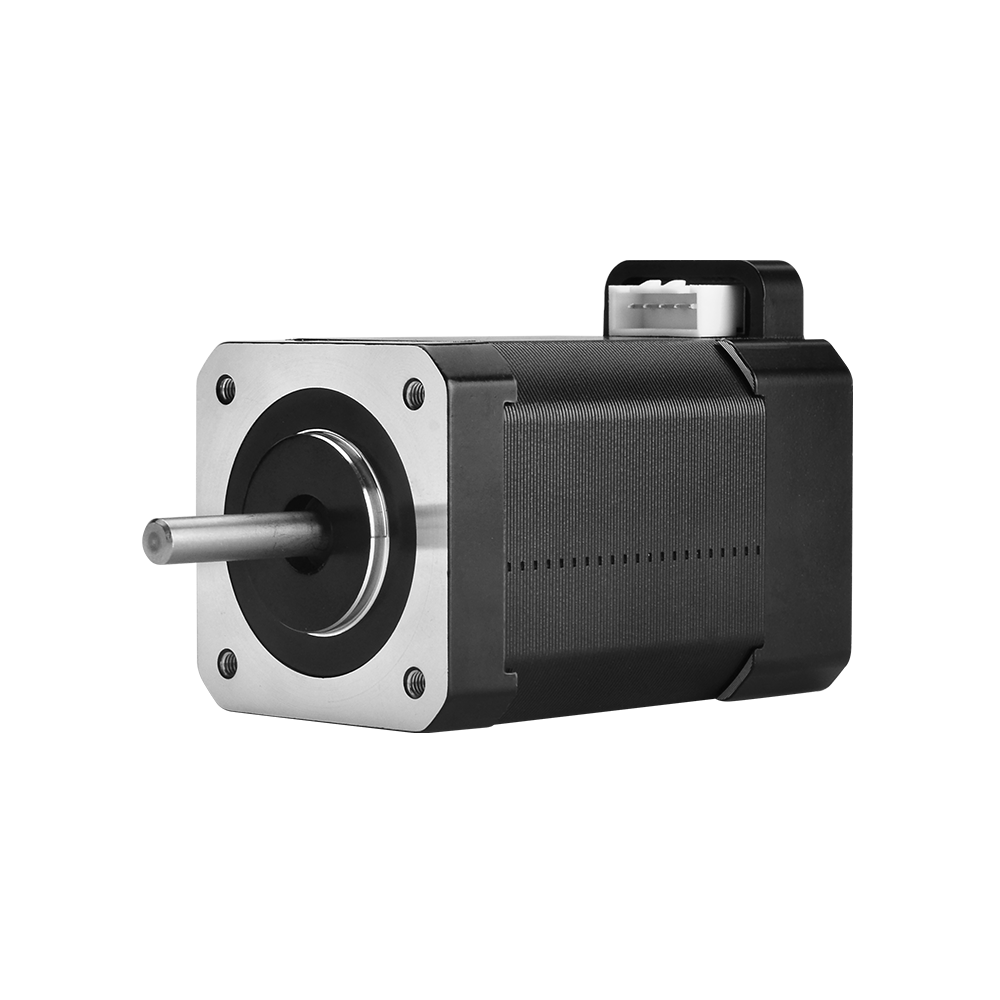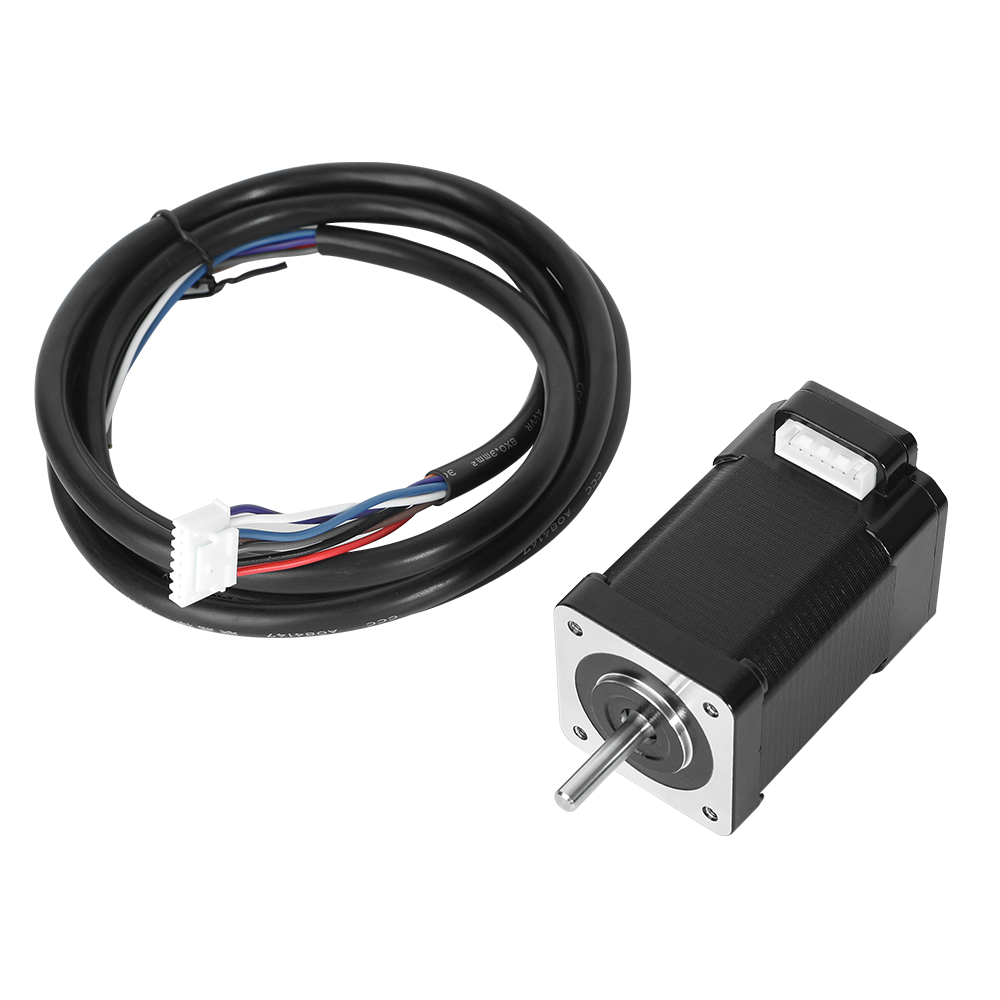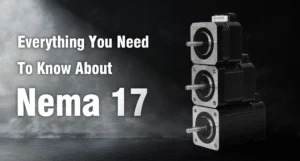NEMA 17 stepper motors play a crucial role in various industries, from 3D printing and CNC machines to robotics and automation. These compact yet powerful motors provide precise control over motion, making them a popular choice for applications that require accuracy and reliability. In this blog post, MXELECTRON will delve into the key aspects of NEMA 17 stepper motors to help you understand their functionality, applications, and how to make the most of their capabilities.
Why is it called NEMA 17?
NEMA 17 refers to a standardized frame size established by the National Electrical Manufacturers Association. In the context of stepper motors, NEMA 17 indicates the motor’s physical dimensions, making it easier for manufacturers and users to interchange components. These motors are known for their 1.7 x 1.7-inch square faceplate, making them suitable for a wide range of projects. This standardized naming convention simplifies the selection process, allowing users to choose motors that fit their application’s requirements.

Are all NEMA 17 motors the same?
While NEMA 17 defines a standard size, it doesn’t dictate the motor’s performance characteristics.
NEMA 17 motors can vary in terms of step angle, holding torque, and other specifications. It is crucial to carefully examine datasheets and specifications to ensure that the chosen motor aligns with the specific needs of the application.
What is the voltage of a NEMA 17 stepper motor?
The voltage of a NEMA 17 stepper motor can vary depending on the design and intended use. Typically, these motors operate at voltages in the range of 2-12 volts.
However, it is essential to refer to the manufacturer’s specifications for the specific model to determine the optimal voltage for reliable performance.
What is the most powerful NEMA 17 stepper?
Determining the most powerful NEMA 17 stepper motor involves considering the holding torque, which is a crucial parameter. Holding torque is the amount of torque a motor can exert when stationary.
Higher holding torque generally indicates a more powerful motor. It’s advisable to choose a NEMA 17 motor with a holding torque that meets or exceeds the requirements of the application.
How Do NEMA 17 Stepper Motors Work?
Stepper motors operate on the principle of dividing a full rotation into a series of steps.
NEMA 17 motors, in particular, are two-phase motors, meaning they have two sets of windings. The interaction between these windings and the electromagnetic field generated by the rotor allows for precise control of the motor’s position.
Is NEMA 17 enough for CNC?
The suitability of a NEMA 17 stepper motor for CNC (Computer Numerical Control) applications depends on the specific requirements of the CNC machine. NEMA 17 motors are commonly used in smaller CNC machines or applications where lower torque is acceptable.
For larger or more demanding CNC setups, higher torque motors such as NEMA 23 or NEMA 34 may be preferred. Evaluating the torque and speed requirements of the CNC system is crucial to determine if a NEMA 17 motor is sufficient.

Applications of NEMA 17 Stepper Motors
NEMA 17 stepper motors find applications in diverse fields, thanks to their versatility and precision. Some common uses include:
- 3D Printers: NEMA 17 motors drive the movement of the printer’s print head and build platform.
- CNC Machines: These motors control the movement of the cutting tool in computer numerical control (CNC) machines.
- Robotics: NEMA 17 motors are ideal for robotic joints and precise motion control in robotic systems.
- Automation: They play a key role in automating processes where accurate positioning is essential.
Choosing the Right NEMA 17 Motor for Your Project
When selecting a NEMA 17 stepper motor for your project, consider factors such as:
- Holding Torque: The amount of torque the motor can exert while stationary.
- Step Angle: The angle through which the motor rotates for each step.
- Voltage and Current Ratings: Match these with your driver and power supply specifications.
Tips for Efficient Operation
- To maximize the performance of NEMA 17 stepper motors, keep the following tips in mind:
- Use a compatible stepper motor driver to ensure smooth and precise control.
- Avoid exceeding the motor’s current and voltage ratings to prevent overheating.
- Implement micro stepping for smoother motion and reduced noise.
Wiring and Connections
Proper wiring and connections are essential for the effective operation of NEMA 17 stepper motors. Ensure that you follow the manufacturer’s guidelines and use the correct wires for the motor windings.
Pay attention to the color-coding of the wires, and make secure connections to the stepper motor driver. This attention to detail will contribute to the stability and reliability of your system.
Overcoming Resonance and Vibration
Stepper motors, including NEMA 17, may experience resonance and vibration during operation. To mitigate these issues, consider implementing damping techniques such as adding shock absorbers or using anti-vibration mounts.
Adjusting acceleration and deceleration settings in your motor control software can also help minimize resonance-related problems.
Temperature Management
Stepper motors can heat up during prolonged operation, affecting performance and potentially shortening their lifespan. Adequate cooling measures, such as adding heat sinks or fans, can help dissipate heat and keep the motor within its optimal temperature range. Monitoring the motor’s temperature during operation is essential for preventing overheating issues.
Troubleshooting Common Issues
Familiarize yourself with common issues that may arise when working with NEMA 17 stepper motors. Problems such as missed steps, erratic motion, or motor stalling can often be attributed to issues with wiring, power supply, or incorrect motor settings.
A systematic approach to troubleshooting, including checking connections and adjusting settings, can help identify and resolve these issues effectively.
Future Trends and Innovations
Stay informed about the latest trends and innovations in the field of stepper motors. Advancements in motor control technology, materials, and design may lead to improvements in the performance and efficiency of NEMA 17 motors.
Keeping an eye on emerging technologies can open up new possibilities for your projects and help you stay ahead in the rapidly evolving landscape of automation and robotics.
Conclusion
NEMA 17 stepper motors are indispensable in precise control and reliable performance applications. Understanding their basic principles, and applications, and how to choose and operate them efficiently is crucial for the success of your projects.
Whether you’re a hobbyist or a professional, harnessing the capabilities of NEMA 17 stepper motors opens up a world of possibilities for innovation and automation in various industries.


